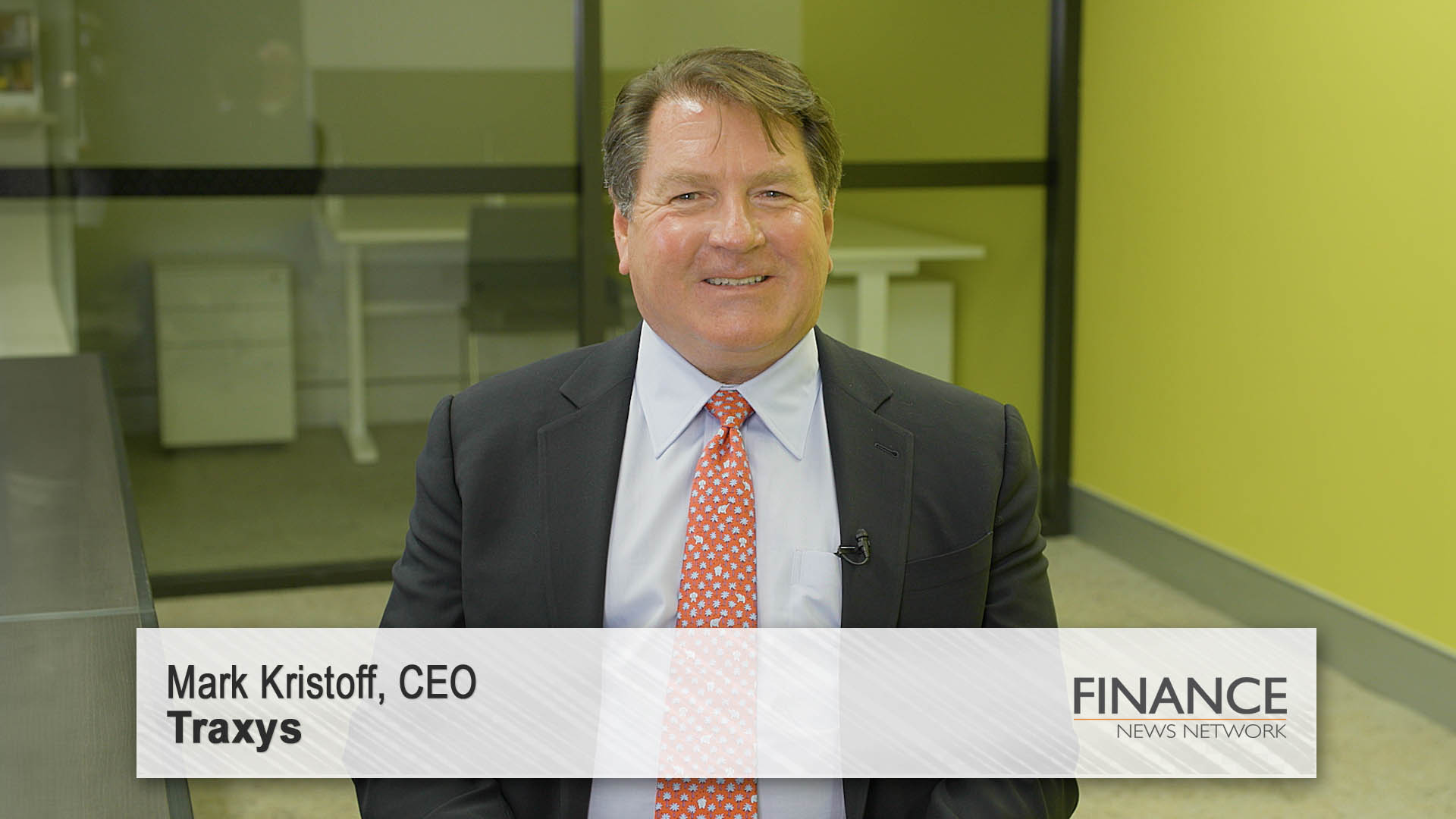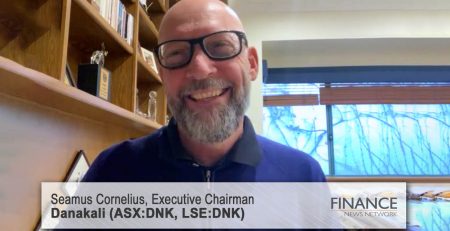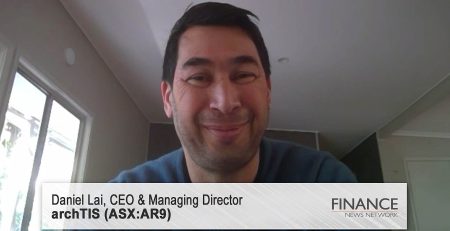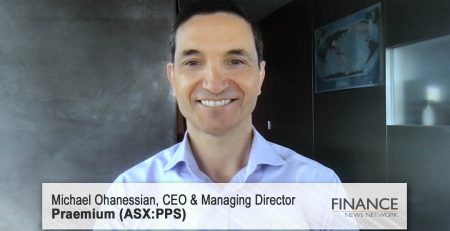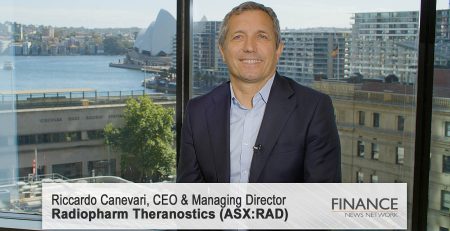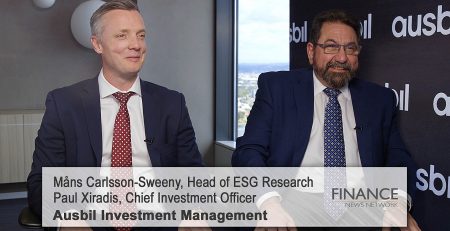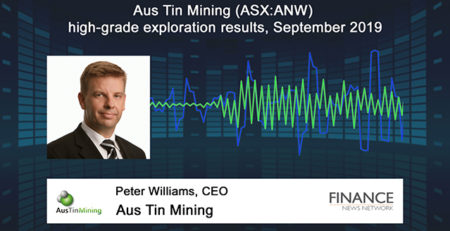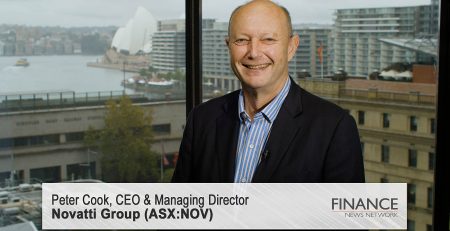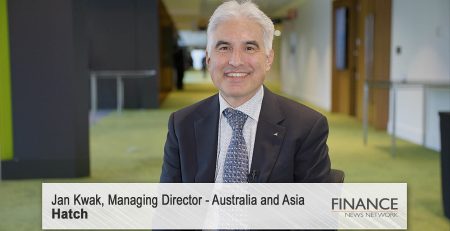Traxys discusses trends in commodities
Traxys CEO Mark Kristoff discusses the commodities market and key drivers of change.
Paul Sanger: I'm Paul Sanger for the Finance News Network, and today we're talking to Traxys CEO Mark Kristoff. For those who are not familiar with Traxys, they are a leading global metals and minerals industry services provider. Mark, a warm welcome to you.
Mark Kristoff: Thank you, Paul. It's nice to be with you.
Paul Sanger: And thanks for taking the time to speak with me today. Let's kick off, Mark. You work in a pretty competitive environment. How does Traxys differentiate itself from its competitors?
Mark Kristoff: Well, I view Traxys as a company that solves problems for our partners. And it starts with building partnerships and trust. That comes through transparency and really understanding what the challenges and needs are. Traxys is not a black box model. We try to develop longer-term partnerships that involve bespoke solutions for producers that want to enter different markets around the globe and customers that have unique supply needs where we can provide sourcing solutions for them.
Paul Sanger: And Traxys has a great track record of delivering metals and minerals faster and more efficiently than many of its competitors. How do you achieve this?
Mark Kristoff: It starts with understanding your customers' needs and how the markets are evolving. And Traxys was an important supplier in the lithium-ion raw material supply chain going back to when we formed the company, because one of our principal shareholders was Umicore, who's one of the larger battery precursor manufacturers. So, we were supplying lithium, cobalt, nickel to the battery industry two decades ago before anybody thought about an EV. We had a front row seat watching the Chinese development of that industry and driving demand. We're also a very important supplier to the super alloy industry. We had a front row seat watching med devices. Unfortunately, Paul, you and I are going to be walking around with a nickel, cobalt, titanium knee or shoulder replacement before it's all over. So, we saw the advent of that demand. And it's really because we're close to our customers and asking them every day, what do you need? How do you see your business developing? How do you see your demand profile changing tomorrow, next month, next year and five years down the road?
Paul Sanger: Fantastic. And how do you see the broader commodity space? What are the key challenges that you see going forward?
Mark Kristoff: Well, listen, I think we are in this world of geopolitical change, which is creating disruptions in trade flows, and you need companies with international footprints that can really help manage those problems and offer alternatives. Much of the industry in the period of globalisation, the first 30 of my 40 years in the business, basically stopped worrying about where stuff was coming from because it was in a warehouse just next door. And they got very used to just-in-time deliveries. I think there was a wake-up call during COVID when supply chains got frustrated due to container dislocations and the like. So, consumers became aware that they need to take more time understanding their supply chain. That was only compounded with some of the geopolitical tensions between the east and west and some of the military operations which have disrupted trade flows.
Paul Sanger: And what are the key minerals and materials that you see being the drivers of the business in the future and why?
Mark Kristoff: Yeah. So, obviously the energy transition. Minerals like lithium, nickel, cobalt, graphite I think are important. I think we need to remember that the intensity of specialty steel utilisation per capita in the west is still substantially higher than China and the developing nations in South-East Asia and in India. So, I think there's a huge demand for materials like chrome, nickel again, and stainless steel, molybdenum, vanadium, niobium, some of the specialty alloys. And as we see increased demand in med device, as I already mentioned, but also in rotating parts for both civil and military aircraft applications. Those demand drivers are very strong.
Paul Sanger: And from a geopolitical perspective, where do you see the greatest opportunities?
Mark Kristoff: Well, again, it's solving problems. Traxys is a multinational company. We've got 500 people representing 36 different nationalities, speak 50 different languages. And I think you need that global perspective in order to provide these solutions. Obviously, these trade disruptions are creating dislocations which need to be addressed, and that's going to require shifting of trade flows in the short term because people need stuff tomorrow and you don't start a mine overnight. It takes time.
I think the shorter-term to mid-term solution is brownfield rehabilitation or projects that have been stranded based on limited availability of capital, having the support in the markets, and then obviously longer-term exploration and greenfield project development will be a piece of that because the demand profile is such that we will need new production.
The last piece I would mention on that is the importance of recycling. And I think that often goes overlooked. You know, people forget that 65 per cent, some cases 85 per cent, of the stainless steel produced in America and Europe comes from scrap, where you have a very sophisticated scrap collection. And that will happen for the energy transition materials also.
Paul Sanger: And, Mark, you talked earlier, you are at the forefront of seeing trends and change and the foresight for seeing those. I'd like to ask this question. Recent news out of China that they're going to curb exports of graphite products from 1 December. It's caused a bit of panic in the market, certainly from what I've been reading. We know that 90 per cent of refined graphite currently comes from China. In the last few weeks, what have you seen in the graphite space? Are people panicking trying to get supplies?
Mark Kristoff: Yeah. Listen, it's really a focus, and we saw this happen 12 years ago in rare earths, where the Chinese controlled over 90 per cent of the world's production of rare earths. We had acquired an asset called Molycorp from Chevron that was a dormant small asset that would never be developed with an oil company. And we said there's a real potential risk of a curtailment of export. You then had the incident between the Japanese and the Chinese where they stopped exporting rare earths to Japan for a period of time. We've been concerned about graphite. We made an investment with our partners at Pallinghurst and Nouveau Monde Graphite in Quebec specifically to bring a alternative for refined graphite products to the market. And that's a project that's under development with capital being spent today that will be an alternative solution.
Paul Sanger: And, outside of China, where do you see geographically people gaining supply outside of China? Is it Africa, the US? Where do you see it?
Mark Kristoff: The traditional markets that are natural resource blessed like Australia, Canada, Africa, parts of South America will continue to be part of that supply chain solution. So we're, again, with our global footprint, searching the globe for those supply opportunities to satisfy our customers.
Paul Sanger: And that brings me on to our next question. Finding a resource, bringing a resource into production, it takes time, it takes money, and it needs support from governments, credit agencies. With regards to Australia, do you think the government is doing enough to help early exploration of Australian companies?
Mark Kristoff: Well, I think what I'm really very happy to see is a governmental interaction and awareness that a problem exists. And I think it starts with a realisation that there's a problem and a need. And I think we can safely say that governments in Australia in particular are really looking at how can they support industrial development. So, that partnership between the public, governmental interests and the private interests that are trying to develop these project is essential to, I think, fast track it. And then the capital markets have to get comfortable with the return metric requirements that many of these projects I think can achieve that will be acceptable to investors. And if you couple that with a proactive umbrella of governmental support, I think those are some of the critical components for this to start working.
Paul Sanger: And it's fair to say that the US really has led the charge in that with the funds that they're supplying into that space.
Mark Kristoff: Yeah. Listen, you know, if I had told you five years ago the Department of Energy was going to be providing a loan to a polymetallic nickel, copper, cobalt asset, you would have thought I was crazy. Rightly so. But we've seen the DOE step up and support both recycling and greenfield project development, the IRA Act, which will support that further internal production or production within trade blocks deemed to be acceptable, I think is the trend that we will witness. And we're preparing ourselves to provide those answers in support of these governmental initiatives.
Paul Sanger: Mark Kristoff, it's been an absolute pleasure. Really appreciate your time and the insights into the industry. Thank you.
Mark Kristoff: Thank you very much.
Ends
Copyright 2023 – Finance News Network
Source: Finance News Network

